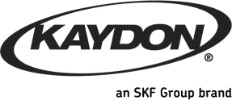
Customer Journey Mapping is one of the most powerful tools modern marketers can use to uncover hidden opportunities for growth. By visualizing how customers move from awareness to decision—and what happens at each touchpoint—businesses gain the clarity to fix friction points, personalize experiences, and improve conversions. At SmartFinds Marketing, we see journey mapping not as a one-time exercise but as an ongoing strategy that turns customer behavior into business intelligence.
In today’s B2B environment, every stage of engagement matters. Buyers conduct independent research, consult peer reviews, and interact with multiple touchpoints before ever speaking with sales. Without mapping that journey, companies risk losing visibility into what influences these decisions. A clear, data-driven customer journey map connects the dots between marketing, sales, and service, revealing precisely where growth potential is waiting to be unlocked.
What Is Customer Journey Mapping and Why It Matters
Customer Journey Mapping is the process of visualizing how customers interact with your brand from their first point of awareness to long-term loyalty. It highlights every touchpoint, both online and offline, that shapes perception and purchase decisions. In essence, it transforms abstract data into a story—one that shows where customers experience value and where they encounter barriers.
For B2B companies, this clarity is essential. The buying cycle is complex, often involving multiple decision makers and lengthy evaluations. Mapping the journey helps teams align their marketing and sales efforts, ensuring that messages, offers, and experiences remain consistent and relevant throughout the entire funnel. This alignment not only drives conversion but also builds trust—a critical factor in long-term business growth.
The Five Stages of a B2B Customer Journey
Every B2B journey is unique, but most follow five primary stages. Mapping each one allows businesses to create more personalized experiences that guide prospects toward becoming loyal advocates.
- Awareness: The buyer becomes aware of a challenge or opportunity and begins initial research.
- Consideration: The buyer evaluates potential solutions and compares vendors based on value and reputation.
- Decision: The buyer makes a selection, often after consulting multiple stakeholders or conducting demos.
- Retention: After purchase, the focus shifts to onboarding, satisfaction, and ongoing support.
- Advocacy: Loyal customers become promoters, sharing experiences and referrals that fuel growth.
When visualized properly, these stages reveal not just where leads drop off but why. By connecting analytics, CRM data, and customer feedback, you gain insights into what actions accelerate conversions and where attention is most needed. Understanding this lifecycle allows SmartFinds clients to focus resources on what truly impacts revenue rather than guessing where to invest next.
Using Customer Journey Mapping to Identify Growth Opportunities
The true value of Customer Journey Mapping lies in its ability to uncover untapped opportunities. Every missed click, abandoned form, or delayed response points to a potential improvement. Mapping helps businesses transform those moments into insights that drive measurable gains. When combined with data visualization and AI, it becomes easier to identify patterns that human teams might overlook.
At SmartFinds Marketing, we integrate journey mapping into broader strategies such as conversion rate optimization (CRO) and AI-powered lead generation. This holistic view enables companies to not only understand customer behavior but to predict it. For more insight into how AI strengthens journey mapping, explore our internal guide on AI-Driven Lead Generation. The goal is to make every interaction purposeful—from first touch to final decision—and to continuously refine those pathways for maximum impact.
Customer Journey Mapping: Statistics and Trends That Underscore Its Value
Data consistently shows that mapping the end-to-end experience is more than a documentation exercise—it is a growth discipline. Organizations that invest in Customer Journey Mapping uncover friction earlier, align teams faster, and move prospects through the funnel more confidently. The following statistics highlight why journey mapping belongs at the center of a modern B2B growth strategy.
- Most decisions are made before sales contact: In many B2B categories, buyers are ~70% through their process before engaging a vendor—and in 80% of cases, buyers initiate first contact. Demand Gen Report
- Buyers prefer rep-free experiences: 75% of B2B buyers now prefer a seller-free or rep-free experience, making a clear, self-guided journey essential. Gartner
- Mapping drives cross-functional clarity: Journey maps help teams establish a shared understanding of the experience, aligning decisions across marketing, product, and CX. Nielsen Norman Group
- Few firms validate their maps with data: Among marketers who have journey maps, less than half validate them against CRM and sales data—leaving growth opportunities untapped. ClearVoice Study
- Maps inform messaging and conversion: Journey maps help teams see which messages resonate at each stage—and where barriers to conversion persist. Harvard Business School Online
- Omnichannel matters: B2B decision makers expect to engage across digital and human channels interchangeably, raising the importance of mapping hand-offs and continuity. McKinsey B2B Pulse
Taken together, these findings point to a clear mandate: design journeys that inform, reassure, and convert—before a prospect ever speaks to sales. Customer Journey Mapping gives your team the visibility to spot friction sooner, align messages and proof with buyer intent, and measure what truly moves deals forward.
How AI and Data Visualization Enhance Journey Mapping
Artificial Intelligence adds speed, scale, and intelligence to Customer Journey Mapping. By analyzing vast data sets, AI identifies micro-patterns—how visitors move across pages, what triggers engagement, and where drop-offs occur. Instead of static snapshots, AI tools create living maps that evolve as customer behavior changes. Predictive analytics can even suggest “next best actions,” helping marketers tailor outreach to meet prospects exactly where they are in their decision process.
Data visualization further brings this insight to life. Dashboards translate complex analytics into clear visuals that make cross-department collaboration easier. Sales, marketing, and customer service can all view the same unified journey, allowing teams to coordinate messaging and strategy in real time. AI and visualization don’t replace human intuition—they enhance it. By blending data intelligence with experience, SmartFinds empowers B2B organizations to transform insight into action faster than ever before.
Turning Insights Into Growth Opportunities
Once your customer journey map is complete, the real work begins—translating insights into measurable results. This means identifying which stages of the funnel hold the most friction and building action plans to improve them. For example, optimizing awareness-stage content can shorten lead time, while refining post-purchase engagement can increase lifetime value. The most successful brands treat journey mapping as a continuous process rather than a one-time project.
To maximize growth, SmartFinds helps businesses integrate journey mapping with performance marketing metrics, ensuring every decision ties back to ROI. When teams understand exactly how each touchpoint contributes to conversion, they can prioritize high-impact initiatives and allocate budgets with confidence. That’s where growth compounds—when data, empathy, and strategy align.
SmartFinds POV: From Mapping to Measurable Growth
At SmartFinds Marketing, we view Customer Journey Mapping as a bridge between strategy and execution. It connects CRO, SEO, and AI to form a cohesive system of marketing intelligence. By understanding what motivates customers at each stage, our team helps clients create meaningful, trust-based experiences that convert more efficiently and retain longer.
Customer Journey Mapping isn’t about more data—it’s about smarter action. Every client we’ve worked with has discovered opportunities they didn’t know existed until the journey was mapped end-to-end. If your organization is ready to find similar clarity, let’s connect on LinkedIn or reach out through the SmartFinds website to start the conversation about unlocking growth through intelligent, human-centered strategy.
Schedule a Discovery Call Now
Author: Melih Oztalay




















